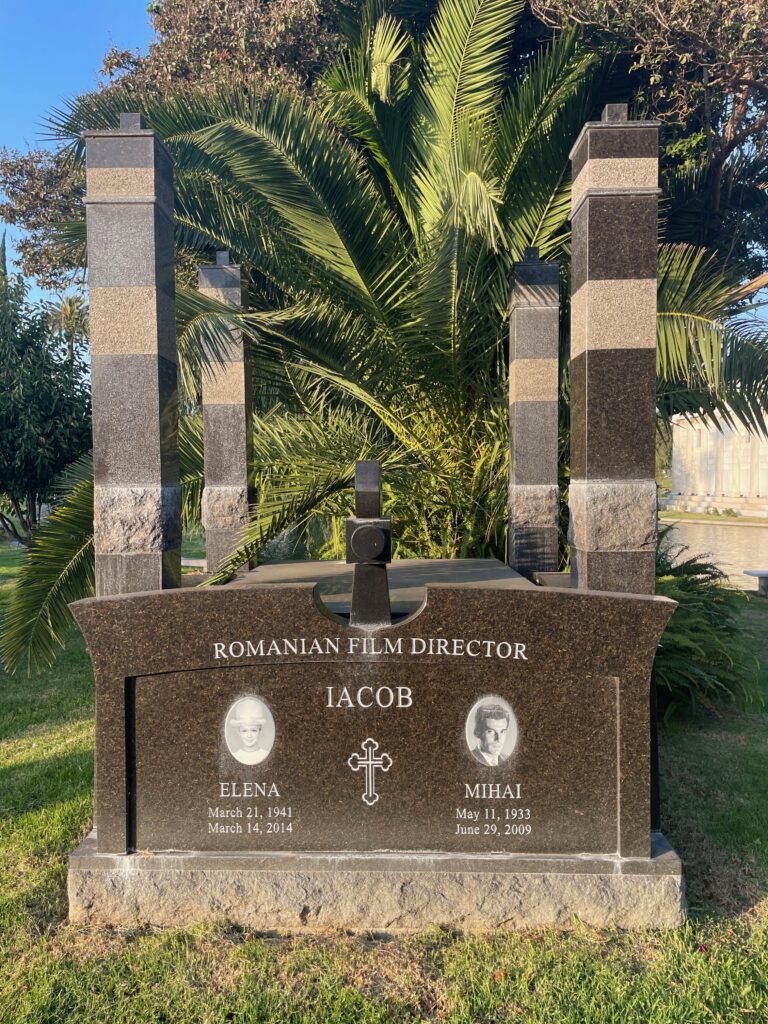Erik Visits an American Grave, Part 1,580
This is the grave of Mihai Iacob.

I don’t have much to say here, but this is possibly why this is interesting. I had never heard of Iacob but I was wandering the cemeteries of Los Angeles and you see a grave like, you take a picture and see if it comes to anything.
There’s not much easily accessible information about the man. He was born in 1933 in Orastie, Romania. He went into film directing, as the grave says. He directed twelve films between 1955 and 1972. Only two of them have a Wikipedia page. 1960’s Thirst won the Silver Prize in the Moscow International Film Festival. 1961’s Darclee competed at Cannes. Putting his name into Google Books gets things like this ad for one of his films in English (not sure if you can see that link, but you can do it yourself if you are so inclined). There is a book called The Most Important Art, about eastern European and Soviet film, but it only has a brief paragraph on Iacob, noting that he was a professor more than an artist, that a number of his films are more like instructional films, and that he worked within the didactic traditions of communist film.
At some point, Iacob ended up in the United States. He didn’t direct any films here. Somehow though, he had the money for this choice grave real estate. So I don’t know what’s up. He died in 2009, at the age of 76.
I find it interesting that there is so little accessible information. His IMDB page is as sparse as his Wikipedia page. Yet he was at least a respectable film director in his home country. I wonder about Romanian film in this era. The Romanian film of the last 25 years has been among the world’s best. Obviously that is in a totally different era than under the Communist Party. There’s no way that anyone could critique Romanian society like that in the 1950s and 1960s. And yet, there are interesting eastern European films that have surfaced–the great Polish films of Andrzej Wajda, the Czech New Wave films, Mikhail Romm’s Nine Days of One Year, Kurt Maetzig’s The Rabbit is Me. So it’s not like it was just a wasteland of propaganda. But I’ve never seen a Romanian film from this era.
So yeah, it’s an interesting mystery. Maybe you all can fill this out a little bit.
Mihai Iacob is buried in Hollywood Forever Cemetery, Hollywood, California.
If you would like this series to visit directors you might have heard of, you can donate to cover the required expenses here. Fritz Lang is in Los Angeles and John Ford is in Culver City, California. Previous posts in this series are archived here and here.


